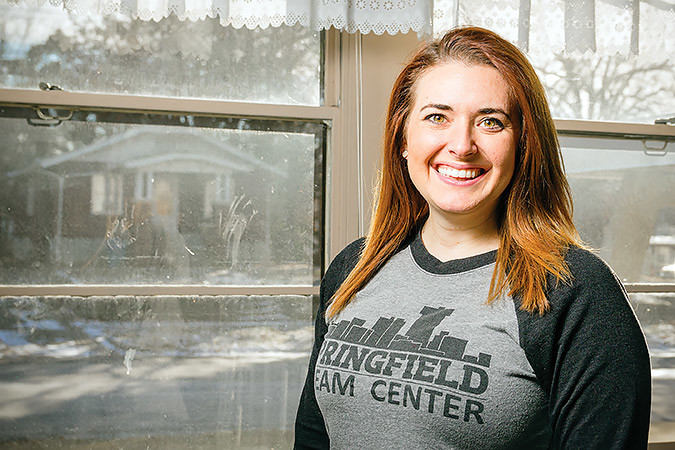As a voice for underprivileged children and families, Jody Glazner is helping fill the gap in Springfield’s impoverished Zone 1.
2017 Projection: Collaboration will allow area nonprofits to better meet needs.
SBJ: What is your definition of poverty?
Jody Glazner: Poverty is twofold. You are relationally poor and materially poor. So, when you are relationally poor, you don’t have those resources and that network.
SBJ: What is the face of poverty in Springfield?
Glazner: The face of poverty in Springfield is not in one area. That’s something that I’ve been learning. Poverty is not picky. Poverty doesn’t care what part of town you live in. We focus a lot on Zone 1. But if you really look at poverty in Springfield as a whole, poverty is everywhere. Poverty is probably in your workplace; it is probably where you go to shop for your groceries; and it’s the car next to you at a stoplight. We see a lot of people in this area who are what I would call borderline poverty. They might not fall below that number that we come up with – that poverty line – but they are literally one blown tire away from being below the line, or they are one sick day that is unpaid, one medical emergency. For poverty to have a face, I think each of us has the possibility of that being our own.
SBJ: What are your plans for the Dream Center?
Glazner: The Dream Center really gets to be this hub of hope for a community. That reaches everything from some counseling opportunities to some food resourcing, some education for adults. We’ve got an after school program for our kiddos. Once a month, we’ve invited some community resources that people might not need access to every week, but they could use it a couple times a year. We do a little bit of everything.
SBJ: There has been discussion about the gap between meeting immediate needs and helping those in need attain soft skills and training. What can be done to address that?
Glazner: If we don’t meet immediate needs, then your soft skills don’t matter. I can teach you to do something, but if you’re hungry, your capacity of doing that well is lowered. When we have those basics, we can start hitting hard on some things. Let’s hit that work ethic. You’re really good at this, so let’s train that into a skill.
We’re going to do both: We’ll feed and then we will partner with places like the career center to do some of that career training. We will partner with the library; they will do little pop up classes where they will come in and teach computer skills. We are going to work with places like (Ozarks Technical Community College) – we are going to be a tutoring center for them.
SBJ: With nearly 26 percent of Springfield residents living below the federal poverty line of $24,300 annual household income for a family of four, City Manager Greg Burris has said the goal is to reduce that 5 percent by 2025. It seems like a small number for so far away. How difficult will that be?
Glazner: When we are talking 25-26 percent of Springfield being at poverty, that’s a large chunk. Our poverty rate is increasingly high, and our unemployment rate is really low. Most people’s immediate response to poverty is well, go get a job. People are working, but they’re not working a job that can get them out of poverty. Now, we’ve got to work around your schedule to then get you job skills or to get you education and the opportunity to use your education that would get you a higher paying job. In Springfield, finding a job for $12 an hour is tough. When you get into it, that 5 percent is very difficult.
